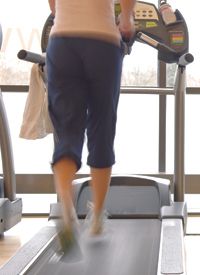Communication Gap: Discussing the Benefits of Physical Activity With Patients
A recent study has found that, when it comes to physical activity recommendations, there is a disparity between what patients want and what their providers do.
Communication Gap: Discussing the Benefits of Physical Activity With Patients

Reminders of the benefits of physical activity to health are everywhere, but are clinicians actually including it in their discussions with patients? Results from a recent focus group study published in the Journal of the National Comprehensive Cancer Network suggest that there is room for improvement.
Physical activity can improve a patient’s sense of wellbeing, control, stress level, and empowerment. It benefits both patients with early-stage cancer who are receiving treatment of curative intent as well as patients in palliative care. The NCCN Clinical Practice Guidelines in Oncology for Survivorship currently recommend exercise for cancer survivors, too.
Researchers with the Gundersen Health System in Wisconsin surveyed 20 patients and 9 practitioners on barriers to physical activities in patients with cancer for its focus group study: Are We on the Same Page? Patient and Provider Perceptions about Exercise in Cancer Care.
Although 95% of patients surveyed felt that they benefited from exercise during treatment, only 3 of the 20 recalled being instructed to exercise. Likewise, whereas all practitioners noted the benefits of exercise to patients, only 1 of the 9 practitioners surveyed documented discussion of exercise in the patient charts.
“Our results indicate that exercise is perceived as important to patients with cancer, both from a patient and physician perspective,” explained Agnes Smaradottir, MD, lead researcher. “However, physicians are reluctant to consistently include physical activity recommendations in their patient discussions. Our findings highlight the value of examining both patient and provider attitudes and behavioral intentions. While we uncovered barriers to exercise recommendations, questions remain on how to bridge the gap between patient and provider preferences.”
Patients also preferred to exercise at home, with 80% of those surveyed noting that they would rather be recommended a home-based exercise regimen, so they could tailor it around their schedules and symptoms. Patients also noted that they would rather have their own clinicians give the recommendation, as they felt they best understand the complexities of their individual treatment plans.
It seems that the lack of recommendations from physicians stems from an uncertainty on the subject. Appropriate physical activity recommendations within a multimodal treatment plan are unclear. Additionally, physicians cite concern over a patient’s physical status and treatment plan as reasons for avoiding the recommendation of exercise. When treating patients who are receiving chemotherapy and radiation or who are frailer with limited mobility, patients cite concern over the patient’s physical condition as reasons for not approaching the topic of exercise.
The researchers recommend clinician education as a solution to the disparity. A successful program, they feel, should include multidisciplinary collaboration that includes treating providers, physical therapy specialists, exercise pathologists, and other relevant subspecialists. The education should also emphasize a patient-centered approach that favors individual recommendations specific to each patient’s treatment plan.
“Indeed, physicians, fellows, and residents who collaborate with a PA specialist through a shared-care clinic visit will gain valuable education about how to discuss exercise recommendations with their patients,” Smaradottir said.
Crystal Denlinger, MD, Chair of the NCCN Guidelines Panel for Survivorship, added, “This study highlights the discord between what we think is important and what we do in actual practice as providers. It also highlights patients’ desire to remain physically active and to receive guidance from their oncologists regarding what they can and should be doing.
“Based on the results of this and other studies, further work on both defining what the optimal physical activity recommendation for patients should be and determining how best to train our oncologic workforce to implement recommendations is needed.”
Smaradottir A, Smith AL, Borgert AJ, Oettel KR. Are we on the same page? Patient and provider perceptions about exercise in cancer care: a focus group study. J Natl Compr Canc Netw. 2017;15(5):588-594.
Shared Model of Care Post-HCT Offers Safe Follow-Up, Reduces Patient Burden
Published: March 19th 2025 | Updated: March 19th 2025Alternating post-HCT care between specialized facilities and local cancer centers produced noninferior non-relapse mortality and similar quality of life to usual care.


